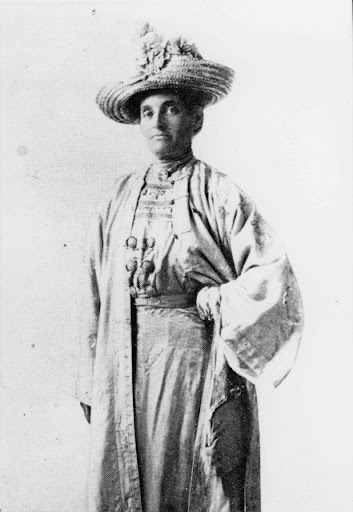
August 26, 2000, marked the centennial of the ratification of the 19th Amendment to the U.S. Constitution, guaranteeing women the right to vote. There were two approaches to winning the vote for women: a nationwide push and a state-by-state fight. Selina Solomons was a key player in the California campaign.
The oldest of seven children, Selina Solomons (1862-1942) came from a San Francisco middle-class family of community leaders. Her mother, Hannah Marks Solomons, was a well-known educator, and her father, Gershom Mendes Seixas Solomons, came to California during the Gold Rush and was one of the founders of San Francisco’s Congregation Emanu-El. His was from a distinguished Sephardic family that included his grandfather, Gershom Mendes Seixas, the first American-born Jewish leader of a congregation. Seixas was known as the “Patriot Rabbi” because of his stance on the Revolutionary War and was invited to participate in George Washington’s first inauguration. An upstanding citizen in public, behind closed doors Selina’s father was addicted to absinthe and ultimately left the family. Despite the setback, the children went on to become leaders in their fields, including Adele, a child psychiatrist, and Theodore, an explorer.
As a feminist, Solomons worked to improve the standard of living for the underprivileged and fought against forced prostitution of women. However, her passion was women’s rights. Solomons believed that one of the reasons the 1896 California suffragists campaign failed was that it was dominated by elites and never reached out to working women. In 1910, She founded the Votes for Women Club in downtown San Francisco, designed to recruit working-class women, but also open to all, including interested progressive men. The Club serviced nutritious meals for a reasonable cost as well as afternoon tea, and was a welcoming place for women to mingle, learn about suffrage, and strategize. It soon became the statewide central headquarters for the California suffragette movement.
In early 1911, California suffragists successfully lobbied the legislature to place a referendum before the voters. Solomons spearheaded the precinct campaign, walking in previously ignored working-class neighborhoods. Alerting the press ahead of time, she also staged a protest with club members at the voter registrar’s office that displayed the placard: “All Citizens Must Register.” Denied their request to register, the women demanded to know whether or not they were citizens. Stunts like these demonstrated to the public how absurd it was to deny women the vote.
As the author of “How We Won the Vote in California: A True Story of the Campaign of 1911,” Solomons became the foremost chronicler of the California women’s fight for the vote. Solomons wrote in her book, “Automobile tours were conducted … throughout the interior. The College League had a special car called the Blue Liner, which held college girls who performed various ‘suffrage stunts’ for the edification … of the country-folk.” Coeds and cars, a novelty at the time, attracted the suffragists’ target audience — male voters. There were parades, pageants and plays, including Solomons’ “The Girl From Colorado,” which according to The San Francisco Call newspaper, was “the first suffrage drama to have been written by the California advocates of political equality.”
The suffragists’ efforts were rewarded. On Oct. 10, 1911, by a 2% margin, California became the sixth state to enfranchise women, a decade before the 19th amendment provided women’s suffrage throughout the United States. The state’s campaign became a standard for other states. Solomons captured how most of the suffragists felt when she said: “October 10 was the greatest day of my life, in the life of my city, of my state, I might say, of the world.” “Social justice is one of the foundations of our tradition,” Sally Priesand, the first female ordained rabbi in America, told the Journal. “Anyone raised with Jewish values knows the importance of tikkun olam. I’d like to think that Jewish suffragists were inspired by their religious background.”
